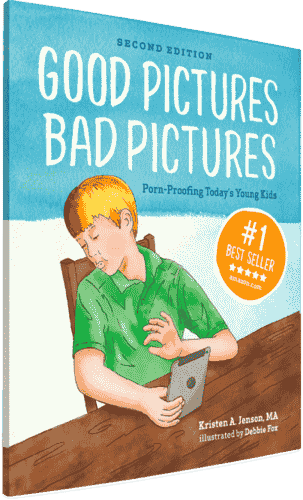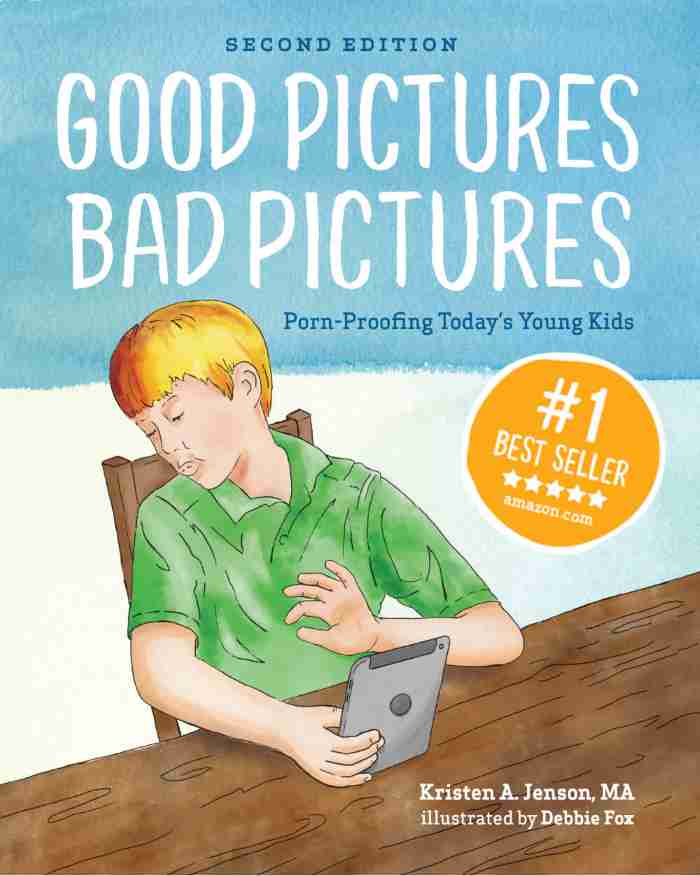

How Does a Sex Addiction Therapist Protect His Kids from Pornography?
I’m a father of 5 young boys, ages 3-11 years old, and I work as a sex addiction therapist. In this post, I’d like to share three strategies for addressing sexual matters, including pornography.

What My Job as a Sex Addiction Therapist Has Taught Me
Maybe because of my profession, I find myself more and more aware of what my kids are confronted with regarding modern sexuality and pornography. Over the course of my career, I have worked with a diverse clientele possessing an assortment of sexual and emotional issues. This has made me even more mindful of my stewardship as a father to protect my sons’ potential. How? By teaching them the important lessons of personal purity, integrity, healthy sexual awareness, and respect for women.
My wife and I have implemented three strategies for addressing sexual matters, including pornography.
#1: Planned Interviews
One strategy is folded into a monthly father and son interview with me and each of my boys to discuss their spiritual, relational, physical, and intellectual well-being. We pray. We talk. I ask questions. I advise. I listen. I inquire some more. Above all I try to stay curious and inquisitive about each of these domains in their lives.
And of course I ask them why it is important to be aware of inappropriate pictures, images, media, peer interactions, and conversations. First, I affirm what they say. Then I try to add a little something extra that they may have missed or didn’t think to say.
As a sex addiction therapist, I know that one cannot reiterate it too much.
#2: Spontaneous Conversations
The other strategy we use is to take advantage of moments that arise at any given time and place. Regardless of what else is going on, we stop to ask and inform them about what they just saw, heard, or were exposed to.
For example, my wife and I were watching a news show about a week ago while the boys were running around the house playing basketball on a number of our door-mounted indoor hoops (better than video games and the microwave timer is a great game clock!). During this news show our oldest son took a break to sit down with us and overheard the reporter describe how children can be easily kidnapped. He seemed intrigued and confused.
My wife quite naturally proceeded to inquire of him if he knew why some adults would steal children. “No”, he said. She then proceeded to explain that many kids are stolen for sexual purposes and even used in child pornography. She explained that child pornography is forcing sexual activity on children that is filmed, put online, and watched by other adults who want to see it. My wife was quite direct and clear, and he was, of course, disturbed by this concept (as we all should be!).
Naturally this was not our first conversation with him about sexual matters. If it had been I imagine he would have been even more distressed and confused. However, he was able to hear and comprehend this because he has heard us talk about the harmful impact of pornography a number of times as well as our view of healthy sexuality.
Our desire is to take advantage of the moments that naturally present themselves and make them into empowering conversations instead of solely relying on structured, formal teaching opportunities.
#3: Resources for Parents
I would like to add that another part of parenting our boys around healthy sexuality is reading books that address these issues directly. One of the books we use is Good Pictures Bad Pictures: Porn-Proofing Today's Young Kids. My wife and I looked forward to reading and using this book due to the positive word of mouth by friends, social media connections, and my professional colleagues.
In fact, a number of peers in my professional community of IITAP (International Institute of Trauma and Addiction Professionals) have referenced and recommended this book on our professional listserve. The buzz and endorsement from professionals and friends was a good sign of its broad appeal and benefit to families.
We read Good Pictures Bad Pictures to each of our kids separately so they could have the ability to ask any questions and get the undivided attention appropriate and important to this topic. They grasped the concepts readily. It was clearly helpful and easy to use, not awkward or intimidating. We certainly plan to revisit this book and the guidance it gives again as the school year starts.
[[CTA]]
The Results
As we have utilized these three strategies, we have seen our sons’ emotional and sexual intelligence grow appropriately and confidently.
The message we want them to hear is that using pornography is a form of unhealthy sexuality that most often results in making a person more selfish, dishonest, isolated, unhappy, less empathetic and more disrespectful towards others, particularly females.

We strive for our sons to understand that respect for others begins with respect for themselves. What they watch, what they say, what they listen to, what they do, and who they associate with largely influences who they become, how they feel, and what they desire.
This is what my fatherly role and professional experience as a sex addiction therapist has inspired me to instill in my boys.
*This updated post was originally published on June 25, 2015.
Another helpful resource for parents is our FREE Quick Start Guide
Get answers to these important questions:
- Why are so many good kids getting pulled into pornography?
- How can parents get more comfortable talking to their kids?
- What are the benefits to tackling this subject early?
- What EXACTLY do your kids need to know to stay safe from pornography in every situation?
Learn all this and more in The Quick Start Guide for Proactive Parents.


Good Pictures Bad Pictures
"I really like the no-shame approach the author takes. It's so much more than just 'don't watch or look at porn.' It gave my children a real understanding about the brain and its natural response to pornography, how it can affect you if you look at it, and how to be prepared when you do come across it (since, let's face it... it's gonna happen at some point)." -Amazon Review by D.O.








